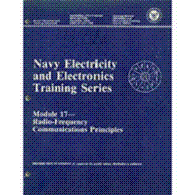Induction Motors
Induction motors are the most commonly used type of ac motor. Its simple, rugged construction costs relatively little to manufacture.
Induction motors
have a rotor that is not connected to an external source of voltage. The
type of motor derives its name from the fact that ac voltages are
induced in the rotor circuit by the rotating magnetic field of the
stator. In many ways, induction in this motor is similar to the
induction between the primary and secondary windings of a transformer.

Induction motor.
Large motors and permanently mounted motors that drive loads at fairly constant speed are often induction motors. Examples are found in washing machines, refrigerator compressors, bench grinders, and table saws.
The stator construction of the three-phase induction-motor and the three-phase synchronous motor are almost identical. However, their rotors are completely different (see the first illustration above). The induction rotor is made of a laminated cylinder with slots in its surface. The windings in these slots are one of two types (shown in the second illustration above).
The most common is the squirrel-cage winding. This entire winding is made up of heavy copper bars connected together at each end by a metal ring made of copper or brass. No insulation is required between the core and the bars. This is because of the very low voltages generated in the rotor bars. The other type of winding contains actual coils placed in the rotor slots. The rotor is then called a wound rotor.

Types of ac induction-motors rotors.
Regardless of the type of rotor used, the basic principle is the same. The rotating magnetic field generated in the stator induces a magnetic field in the rotor. The two fields interact and cause the rotor to turn. To obtain maximum interaction between the fields, the air gap between the rotor and stator is very small.
As you know from Lenz’s law, any induced emf tries to oppose the changing field that induces it. In the case of an induction motor, the changing field is the motion of the resultant stator field. A force is exerted on the rotor by the induced emf and the resultant magnetic field.
This force tends to cancel the relative motion between the rotor and the stator field. The rotor, as a result, moves in the same direction as the rotating stator field. It is impossible for the rotor of an induction motor to turn at the same speed as the rotating magnetic field. If the speeds were the same, there would be no relative motion between the stator and rotor fields; without relative motion there would be no induced voltage in the rotor. In order for relative motion to exist between the two, the rotor must rotate at a speed slower than that of the rotating magnetic field. The. difference between the speed of the rotating stator field and the rotor speed is called slip. The smaller the slip, the closer the rotor speed approaches the stator field speed.
The
speed of the rotor depends upon the torque requirements of the load.
The bigger the load, the stronger the turning force needed to rotate the
rotor. The turning force can increase only if the rotor- induced emf
increases. This emf can increase only if the magnetic field cuts through
the rotor at a faster rate. To increase the relative speed between the
field and rotor, the rotor must slow down. Therefore, for heavier loads
the induction motor turns slower than for lighter loads. You can see
from the previous statement that slip is directly proportional to the
load on the motor. Actually only a slight change in speed is necessary
to produce the usual current changes required for normal changes in
load. This is because the rotor windings have such a low resistance. As a
result, induction motors are called constant-speed motors.
(back)
(top)
(next)
(return to ac current motors page)

















